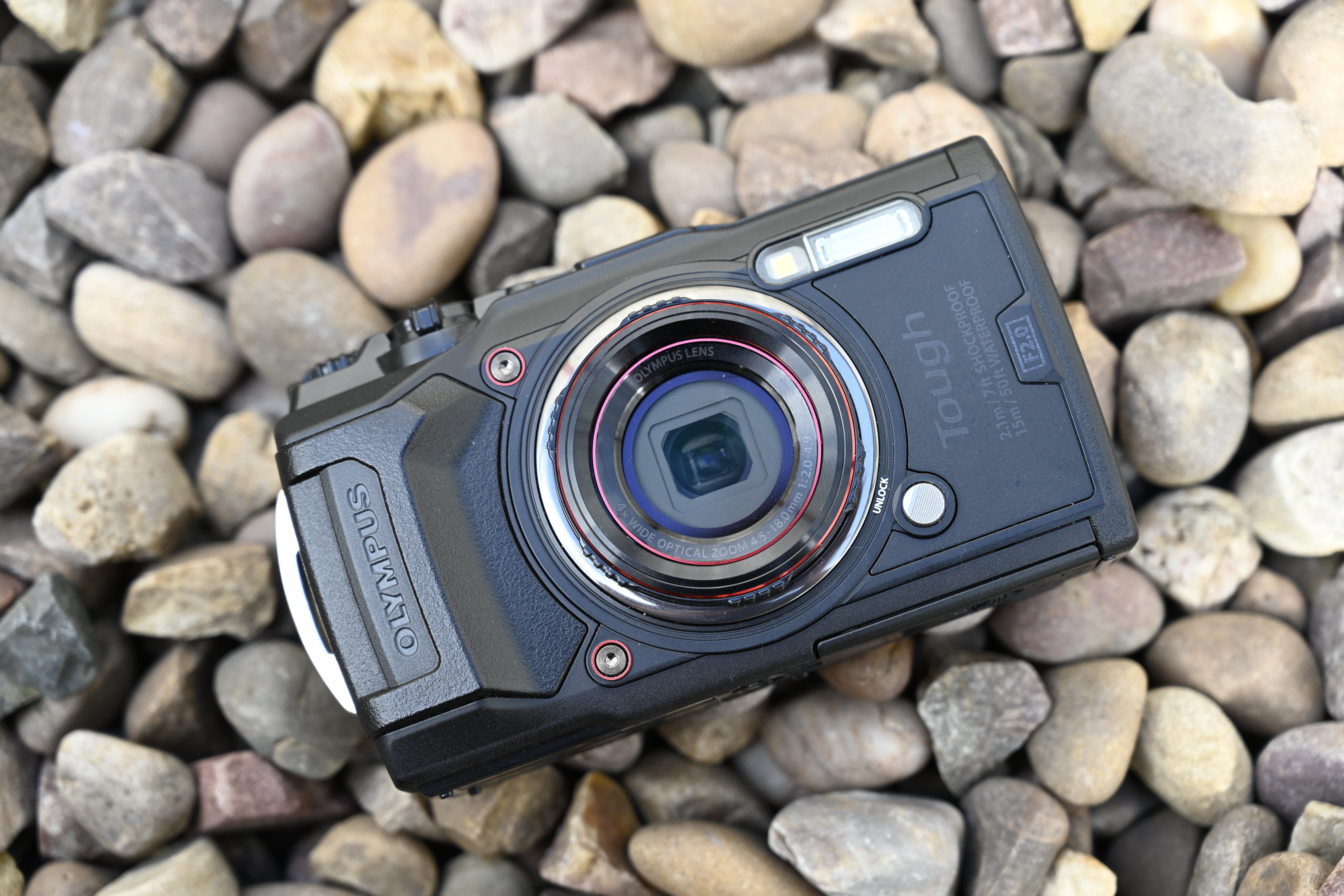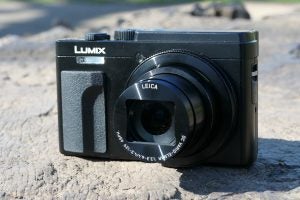Best compact camera 2020: The 12 best take-anywhere cameras
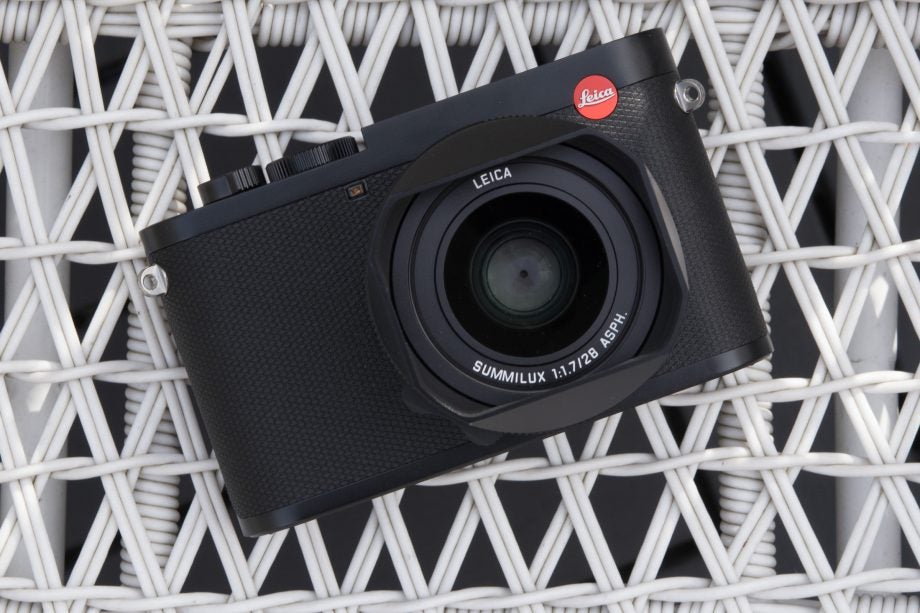
Which compact camera should you buy? Here are the best compact cameras we’ve reviewed
Smartphone cameras are improving every year, but for photo-snapping enthusiasts a good compact camera is always a worthy investment.
The newest models offer things your average smartphone can’t. These additions can range from long zoom lenses for the perfect holiday shots to weighty sensors for a level of dynamic range and low-light performance you’ll struggle to achieve without a dedicated camera at your side.
In our opinion, the Sony RX100 VII is the best overall compact camera you can buy – that said, the RX100 VI remains a fantastic option if you don’t need Sony’s latest tech.
While, the RX100 VII is fantastic, the hefty price tag isn’t for everyone. If you’re looking for a compact camera that won’t break the bank that you can slip into your backpack on holiday or pull out for candid shots at family parties, you really can’t go wrong with the Panasonic Lumix TZ100.
- Our overall winner: Sony RX100 VII
- Best step up from a smartphone: Canon G5X Mark II
- Best travel zoom: Panasonic Lumix TZ200
- Best waterproof camera: Olympus Tough TG-6
- Best for street photography: Panasonic Lumix LX100 II
- Best for vloggers: Canon Powershot G7X Mark III
- Best rangefinder: Fujifilm X100F
- Best for pro shooters: Canon G1X Mark III
- Best value travel compact: Panasonic TZ95
- Best for stills purists: Ricoh GR III
- Best money no object compact: Leica Q2
- Best value big sensor compact: Fujifilm XF10
How we test
When we review and compare compact cameras, we kick off by testing for colour. Differing sensors and image processors can interpret colour differently and their shades can shift at different ISO sensitivities, affecting how your photography will look when you’re done shooting.
We then go on to examine resolution. Our lab tests allow us to determine exactly how much detail a camera’s sensor is able to resolve – it’s important to note that even snappers that share identical pixel counts can often outperform each other in this respect.
Third, we look at image noise, which affects how clean an image appears at higher ISOs and can vary hugely from camera to camera.
Finally, we take each and every camera out into the world, shooting in true-to-life conditions to find out how that piece of kit performs with use. All of these results are analysed with the very best in industry software, ensuring our reviews are always authoritative and reliable.
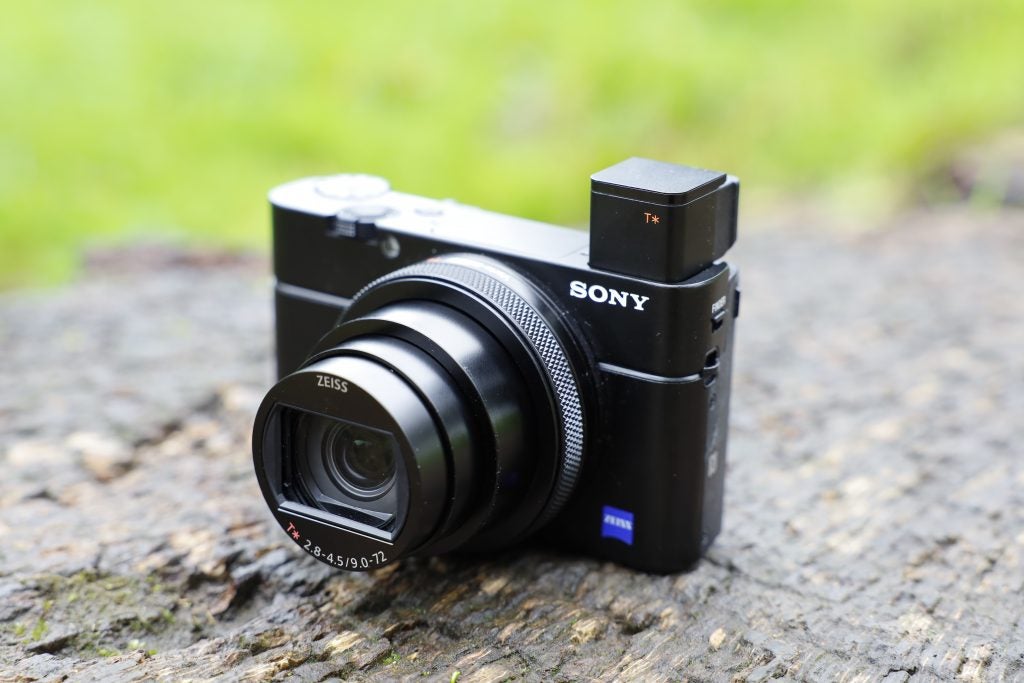
1. Sony RX100 VII
Justifies its price tag by being the best compact camera you can buy
Pros:
- Great image quality
- Manual controls
- Good video options
Cons:
- No front grip
- Very expensive
- Buttons are a bit fiddly
Sony’s RX series has long been the gold standard for compact cameras, but each model unfortunately also costs about the same as a lump of that precious metal. How does Sony justify the price tag? By cramming in some incredibly advanced tech. With the VII Sony has proved once again that it has some amazing technology in its arsenal that be packed down into the tiniest of bodies.
On paper, there are so many things to like about the RX100 VII that we wouldn’t have too many qualms about calling it the perfect pocket solution. It really shows that you don’t have to skimp too much on image quality and performance if you want something which is ultra portable.
But there is one problem – and it’s a big one – and that’s price. There’s no getting around the fact that spending £1200 on a compact camera – no matter how powerful – is going to be a big ask for many people.
If you want the best of the best and you’ve got the budget to spend, then this is a camera which comes extremely highly recommended, but it’s worth looking down back through the line of RX100 predecessors if your budget is a little more conservative and you can live without some of the additional features that the RX100 VII brings.
For those with a more sensible budget, it’s worth looking at older RX100 models, as well as those from Canon’s Powershot range – particularly the G7X Mark III if vlogging is your thing.
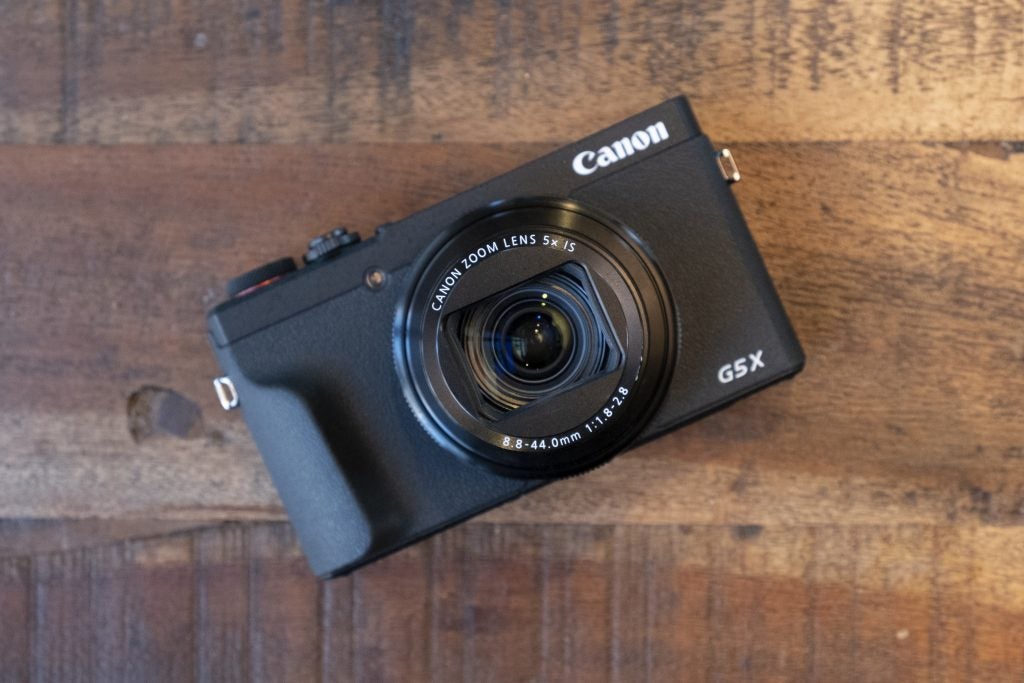
2. Canon G5X Mark II
One of the best compact cameras you can buy and a genuine step up from your smartphone
Pros:
- Good image quality throughout the zoom range
- Genuinely pocketable
- Useful pop-up EVF
- Shoots uncropped 4K video
Cons:
- No phase-detect autofocus
- No microphone input
- Lacks the G7X Mark III’s YouTube livestreaming
It’s a little pricey, but the G5X Mark II is one of the best compact cameras you can buy and a genuine step up from your smartphone camera. Small enough to fit into a trouser pocket rather than a large jacket pocket, it promises strong all-round performance, versatility and superb image quality, making it one of the best options around. If you’re looking for a genuinely pocketable compact camera with smartphone-beating performance, then the G5X Mark II is certainly one of the best you can buy.
The G5X Mark II is a great ‘daily driver’. Handling is excellent for a compact, with a generous grip that makes it comfortable to hold and easy to steady, and other impressive features include the optical zoom, burst shooting and pop-up viewfinder. The latter, while quite small at 0.39 inches, has a 2.39-million dot resolution with a decent 120fps refresh rate, which makes it easy to follow fast-moving objects. Thanks to a new Digic 8 processor, the G5X Mark II can shoot at an impressive 20fps (with your focus fixed on a subject) or 8fps for up to 320 JPEGs with autofocus.
The lack of phase-detect autofocus is a downside that affects its hit rate for action and sports, and it’s a shame there’s no microphone input or fully articulating touchscreen, but these are really the only black marks against it.
While the price is certainly a hefty investment for a compact camera, what you’re paying for is the convenience of an electronic viewfinder plus a sensor-lens combo that gives you near-DSLR image quality in your pocket. For many people this makes it well worth the cost and, in fact, you may find the G5X Mark II is the camera you use most – smartphone included.
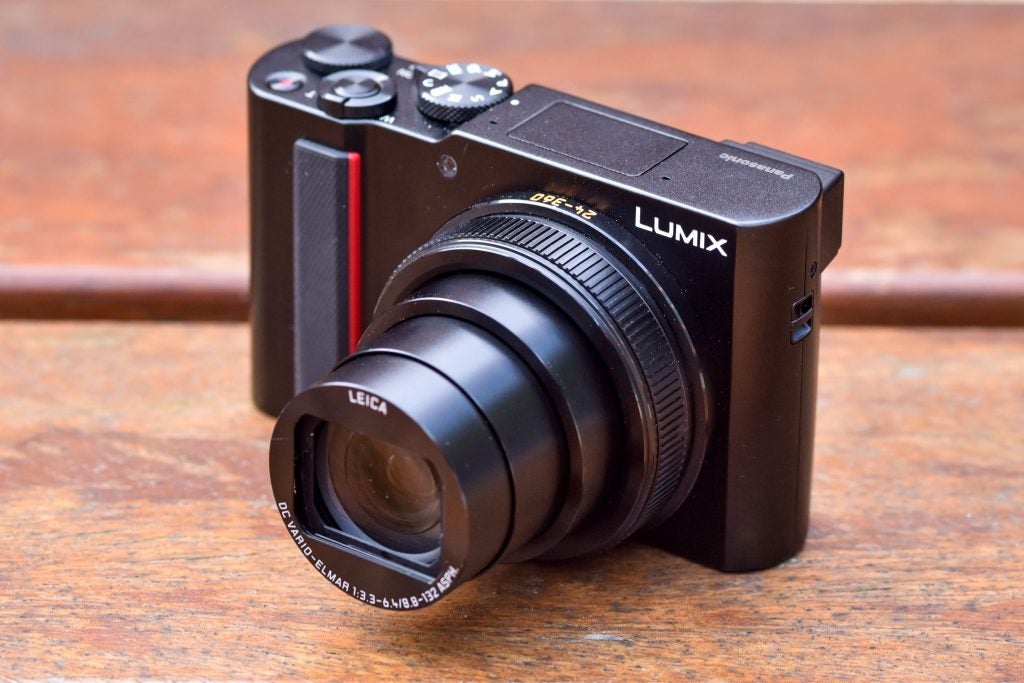
3. Panasonic Lumix TZ200
This premium compact’s long zoom makes it a cracking travel camera
Pros:
- Great zoom range for such a small camera
- Very respectable image quality
- Considerably improved grip compared to Lumix TZ100
Cons:
- Rear screen doesn’t tilt
- Lacklustre out-of-camera JPEG image quality
- Control layout is poor for eye-level shooting
The Lumix TZ200 is Panasonic’s top-of-the-range travel compact and is built around a 1in 20.1MP sensor and a Venus Engine image processor. This enables the TZ200 to offer a standard sensitivity range of ISO 200-25,600 bookended by expanded settings of ISO 80 and ISO 25,600.
The TZ200’s headline feature is its 24-360mm lens, which brings it closer to the zoom ranges offered by cheaper long-zoom compacts with smaller sensors and inferior image quality. The maximum aperture has dropped to f/3.3-6.4 (from f/2.8-5.9 on the Lumix TZ100) and it carries across built-in image stabilisation, which goes a long way towards making this small-aperture superzoom usable without always having to raise the ISO to avoid blur from camera shake.
Video enthusiasts will be pleased to note that 4K video capture is also supported, alongside a range of 1080p Full HD options. In addition to its fully automated point-and-shoot modes the TZ200 also offers the full range of PASM modes plus Raw support. Panasonic’s handy 4K-photo mode gets its own button, allowing you to record 8MP stills at 30fps. It even has a pre-burst mode that records footage from a second before and after you press the shutter button.
The TZ200 is equipped with a 2.33m-dot EVF (0.53x magnification), below which sits a fixed 3-inch/1.24m-dot LCD that provides touchscreen control over the camera. Autofocus works exceptionally well, and in good light focusing is essentially instantaneous. The TZ200 can even make a decent attempt at tracking moving subjects while shooting at a brisk 7fps. The fastest the camera can shoot full resolution images is a very decent 10fps.
Image quality from the 1in sensor is very good, though you’ll get the best results from processing its Raw files. If you want a pocketable camera with a long zoom range that delivers pleasing results, the Panasonic Lumix TZ200 is the best travel camera you can buy right now. If its price is more than you’re willing to spend, we’d recommend looking at the Panasonic Lumix TZ100, which can be found for under £400 at the time of writing.
4. Olympus Tough TG-6
A minor upgrade on the TG-5, and still the best waterproof compact for family holidays
Pros:
- Speedy autofocus for a rugged compact
- Takes sharp and vibrant photos
- Can shoot in Raw for flexible editing
Cons:
- Rivals have better screens
- Mode dial can be a bit on the stiff side
If you’re looking for a pocket camera that can survive sea swims and family trips to the beach, the TG-6 is the best option around. Its predecessor’s speedy autofocus and ability to shoot in Raw lifted it above rivals like Panasonic’s FT7, and this model adds a new screen, high-speed video recording and an Underwater Microscope mode.
As rugged compacts go, the TG-6 is reasonably good looking and fun to use, with one-handed operation possible thanks to the majority of buttons being on the right-hand side. You also get some basic manual shooting controls and the option of shooting in Raw, which is particularly handy if you’re planning to shoot underwater where white balance tends to be tricky.
Is it worth getting the TG-6 over its predecessor? The extra screen resolution – which is twice that of the TG-5 – is a boon for composing shots, while those new high-speed video modes (including 1080p at 120fps, or 480p at 480fps) are ideal for family holiday moments where you don’t want to risk dropping your phone onto rocks. The Underwater Microscope mode is also handy for fans of aquatic macro photography.
With punchy, vibrant image quality and solid video performance, the TG-6 is the best camera of its kind and ideal for kids, as long as you don’t expect miracles in low light or smartphone-trumping photos.
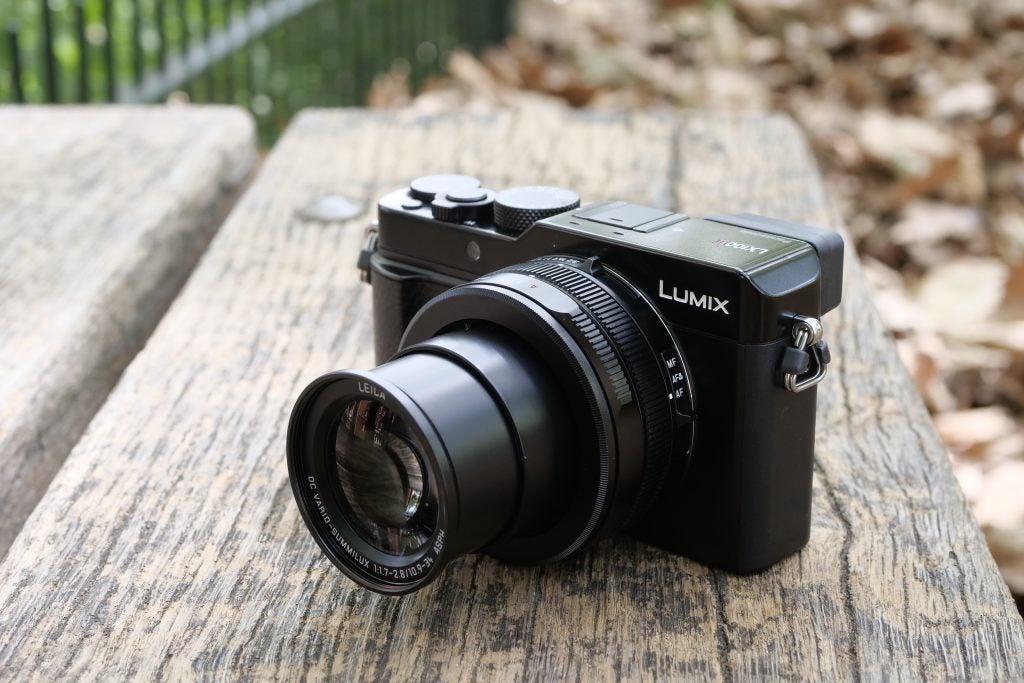
5. Panasonic Lumix LX100 II
A fine street-photography camera with a large sensor
Pros:
- Large sensor
- Touch-sensitive screen
- EVF
- 4K Photo and Video modes
Cons:
- No tilting screen
- Incremental upgrade
One of our favourite big-sensor compacts, the original LX100 was a winner for its large Four Thirds sensor and all round flexibility.
We had to wait four years for a replacement, the LX100 II, and while it brings some welcome upgrades in terms of the sensor and electronic viewfinder, overall it’s a fairly undramatic set of improvements.
The biggest drawback is the lack of a tilting screen – for a camera so squarely aimed at street photographers, not having one is a real shame. Still, you’ve got a Four Thirds sensor, which is the same size as the one you’ll find in one of the company’s interchangeable lens cameras, coupled with a 3x zoom lens which gives you fast apertures of f/1.8-2.8.
It might not be quite small enough to fit in your trouser pocket, but slipping it into a jacket or a small bag is more than doable, making it a sensible choice for travelling when you don’t want to compromise too much on quality.
Images from the LX100 II are great, with nice tones and plenty of detail. We particularly love the new L.Monochome D Photo Style, which works really well for classic street-style shots.
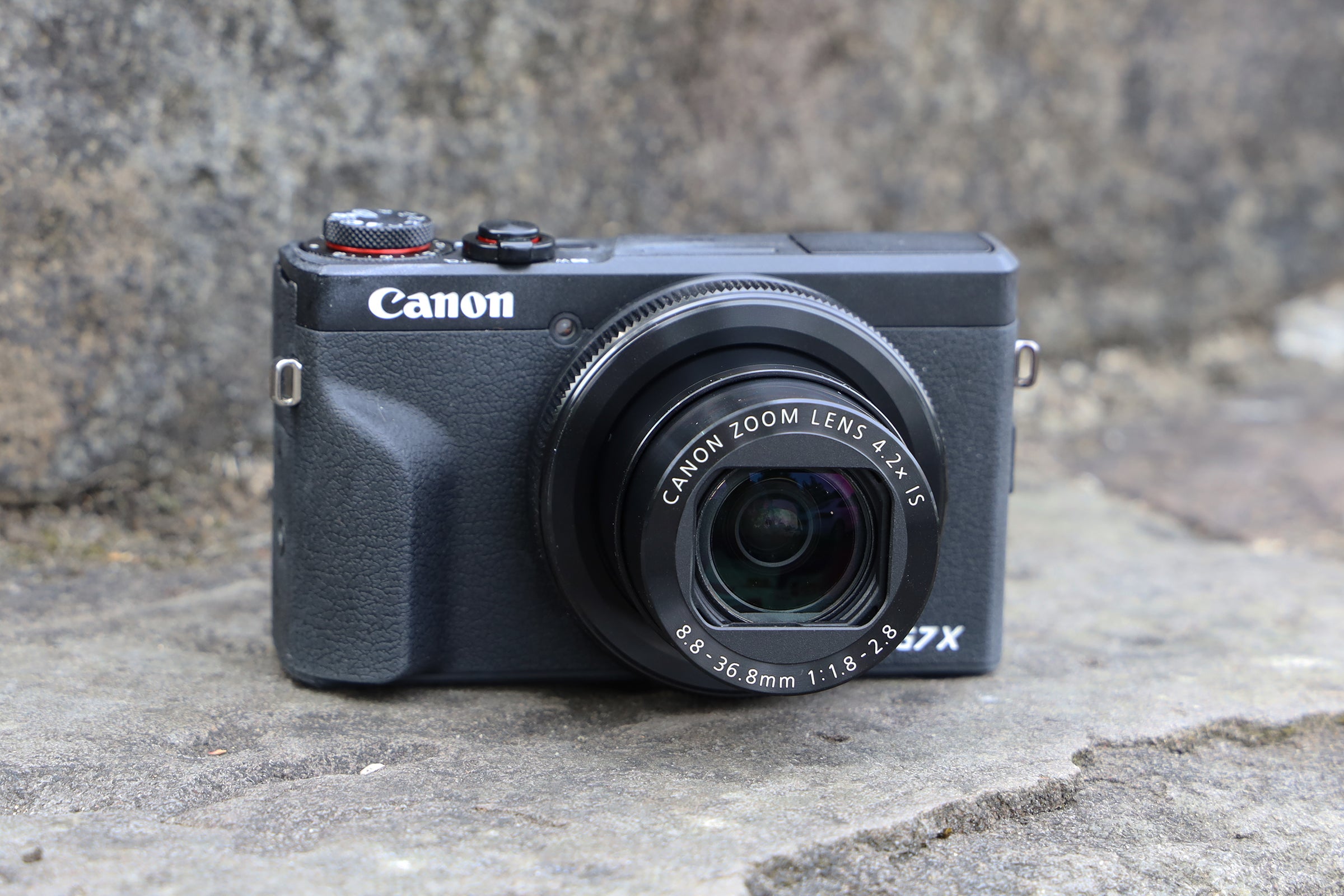
6. Canon Powershot G7X Mark III
The best travel compact around for vloggers and video lovers
Pros:
- Great new video features, including a mic input
- Excellent image quality
- Manual controls
- Pocketable design
Cons:
- Lacks a viewfinder
- Relatively limited zoom range
- No headphone socket
Looking for a compact camera that combines superb stills quality with strong vlogging skills? The G7X Mark III is the best around and our new favourite for the job, thanks to some big upgrades on the Mark II.
Most notably, these include uncropped 4K video recording and a new microphone input, which together make this 1in compact a fantastic little video camera. There are still some limitations with its size – for example, there are no hot or cold shoes to mount a mic, which means you’ll need to find a bracket for that – but it remains a cheaper way to get this combination of features than shelling out the extra £500 needed to get the Sony RX100 VII.
Of course, the G7X Mark III isn’t just for video, and it remains an excellent compact camera for stills. This is largely down to its combination of a large sensor and wide-aperture lens, which helps you create attractive shallow depth of field and get closer to subjects thanks to the 4.2x optical zoom.
In short, this is a great little travel camera with few weaknesses, other than its price tag and lack of viewfinder. If you want to save some cash and are mainly interested in stills shooting, it’s worth keeping an eye on prices for the G7X Mark II, which has the same sensor and lens combination. If you’re a vlogger or want a compact that can shoot a mixed diet of video and stills, however, then it’s currently hard to beat the G7X Mark III.
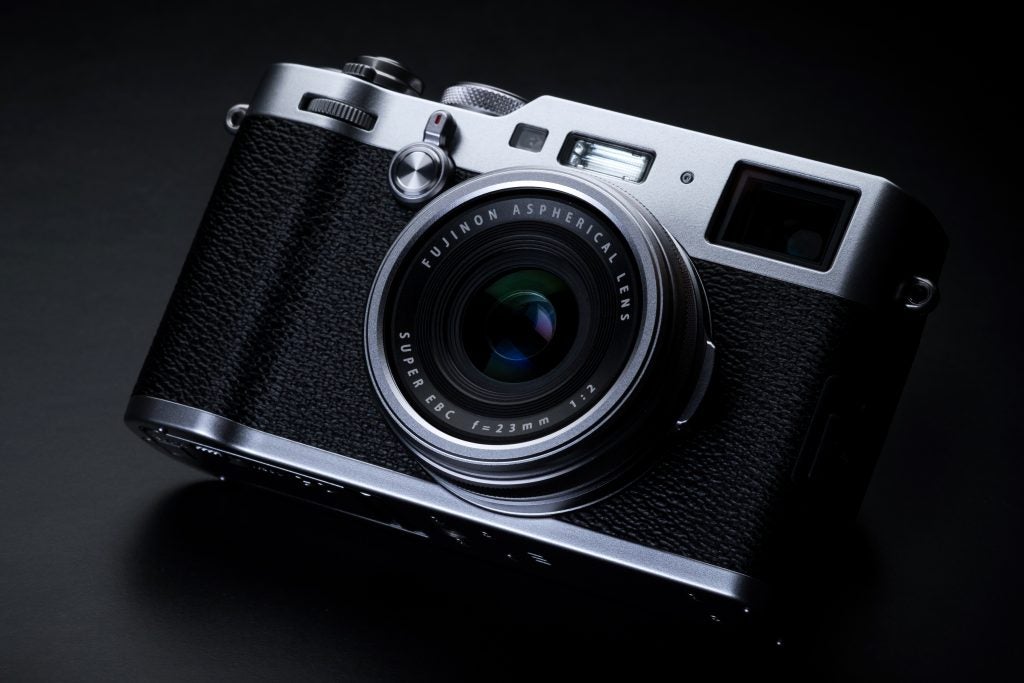
7. Fujifilm X100F
The classic rangefinder for street-photography purists
Pros:
- Looks gorgeous
- Solid battery life
- Great image quality
Cons:
- Limited to 1080p video
The X100F is the fourth and latest model in Fujifilm’s line of highly regarded fixed focal length premium compacts, succeeding 2014’s X100T model with a generous range of enhancements. This includes the same 24.2MP APS-C X-Trans CMOS sensor and X-Processor Pro image processor employed by the company’s flagship X-Pro 2 and X-T2 interchangeable lens models. Needless to say, image quality from the X100F is exceptional.
Compared to the 16.3MP sensor employed by its predecessor, the X100F’s 24.2MP sensor also offers significantly more resolution, which benefits both image cropping and printing. Sensitivity, meanwhile, ranges from ISO 100-12,800 with extended settings up to ISO 51,200. While primarily targeted at stills enthusiasts, the X100F does offer Full HD video capture at a maximum 60fps. Unlike other cameras in this round-up, however, there’s no 4K support.
The X100F features the same innovative hybrid viewfinder as previous X100 models. It can be set to provide either an optical view overlaid with framing guides, or a 2.36m-dot electronic viewfinder with 100% coverage.
While the fixed 23mm, f/2 lens has long been a distinctive and desirable feature of the X100 line, many may be slightly put off by it. To this end Fujifilm offers a couple of optional lens converters in the shape of the TCL-X100 II and WCL-X100 II. Once attached, these convert the X100F’s focal length to 50mm and 28mm respectively. Better still, the camera knows when they have been attached, automatically correcting any optical aberrations such as fringing in-camera.
In terms of design and handling, the X100F shares the same retro-rangefinder design of its predecessors, with the trademark knurled aluminium dials on the top-plate providing the same pleasingly tactile user experience that has become a hallmark of so many Fujifilm X-series cameras.
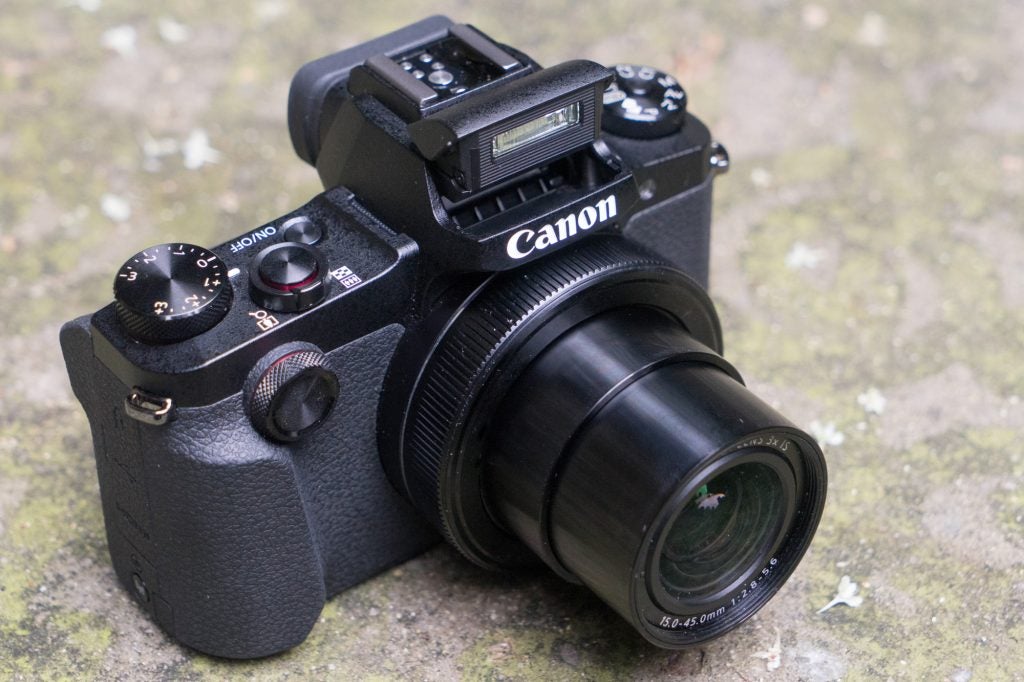
8. Canon G1X Mark III
This mini DSLR has a unique mix of APS-C sensor and zoom
Pros:
- Class-leading image quality
- Excellent control layout and handling
- Robust weather-resistant construction
Cons:
- Lens is a little limited in terms of creative potential
- Relatively poor battery life
- No 4K video recording
Canon was the first to put a large sensor into a reasonably small zoom compact back in 2012, with its original PowerShot G1X sporting a 14MP, 1.5-inch sensor. Today, we’re seeing APS-C size sensors fitted within more compacts and the Canon G1X Mark III will go down in history as the first zoom compact camera with an APS-C sensor and built-in viewfinder.
Offering image quality that’s on a par with a DSLR is impressive, and the G1X Mark III offers plenty more besides its large sensor and 24-72mm-equivalent f/2.8-5.6 lens. The firm’s Dual Pixel CMOS AF technology is onboard for on-chip phase detection, which means autofocus is impressively quick. The sensor also teams up with Canon’s latest Digic 7 processor, enabling 7fps with autofocus between frames, or 9fps with the focus fixed at the start of a burst.
The lens includes optical image stabilisation promising four stops benefit and, alongside the conventional PASM modes for enthusiast photographers, there’s the familiar set of automated Scene modes aimed at beginners. Canon includes comprehensive connectivity options, with onboard Wi-Fi, Bluetooth, and Dynamic NFC. Those wanting to shoot 4K video, however, will be slightly disappointed to find that it only offers Full HD movie recording at 60p.
The SLR-styled body layout largely resembles the company’s 1in sensor G5 X model. Yet despite its petite size, the camera feels secure in the hand, thanks to its good-sized rubberised fingergrip and pronounced thumb hook. The most important shooting controls are reasonably large and well placed too, which isn’t always the case on cameras of this size.
Though it’s not the easiest camera to slip into a trouser or shirt pocket, it isn’t exactly bulky. It fits very nicely into a jacket pocket and can be pulled out rapidly for spur-of-the-moment shots. The only real downsides are its relatively limited lens range and modest maximum aperture.
9. Panasonic TZ95
A good travel zoom alternative to the Canon SX740 HS
Pros:
- Long 30x zoom
- Touch-sensitive tilting screen
- Manual controls
- 4K photo function
Cons:
- Small viewfinder
- Not very good in low light
- Comparatively small sensor
Panasonic’s latest travel zoom differs from compacts like the Panasonic TZ100 as it has a smaller 1/2.3-in sensor, but it compensates with a longer 30x zoom and features like a tilting, touch-sensitive screen.
That zoom gives you a focal reach of 24-720mm in 35mm terms, which can come in very handy on holidays for shooting landscapes and wildlife. The TZ95 isn’t radically different from the TZ90 it replaces, with the same lens, battery life and touchscreen, and the main differences are slightly higher-res viewfinder and Bluetooth for sharing images to your smartphone.
It doesn’t quite match the 40x optical zoom of the Canon SX740 HS, but it does have a slightly longer battery life (380 shots versus 265 shots) and a viewfinder to help with shooting on sunny days.
Photo quality is very good in well-balanced light, but, as is often the case with small sensors, it struggles a bit more in low light and mixed lighting. Still, there’s a lot to like about the TZ95, and it’s a very good travel option, particularly with handy features like 4K photo (a kind of 30fps burst mode) and 4K video on board.
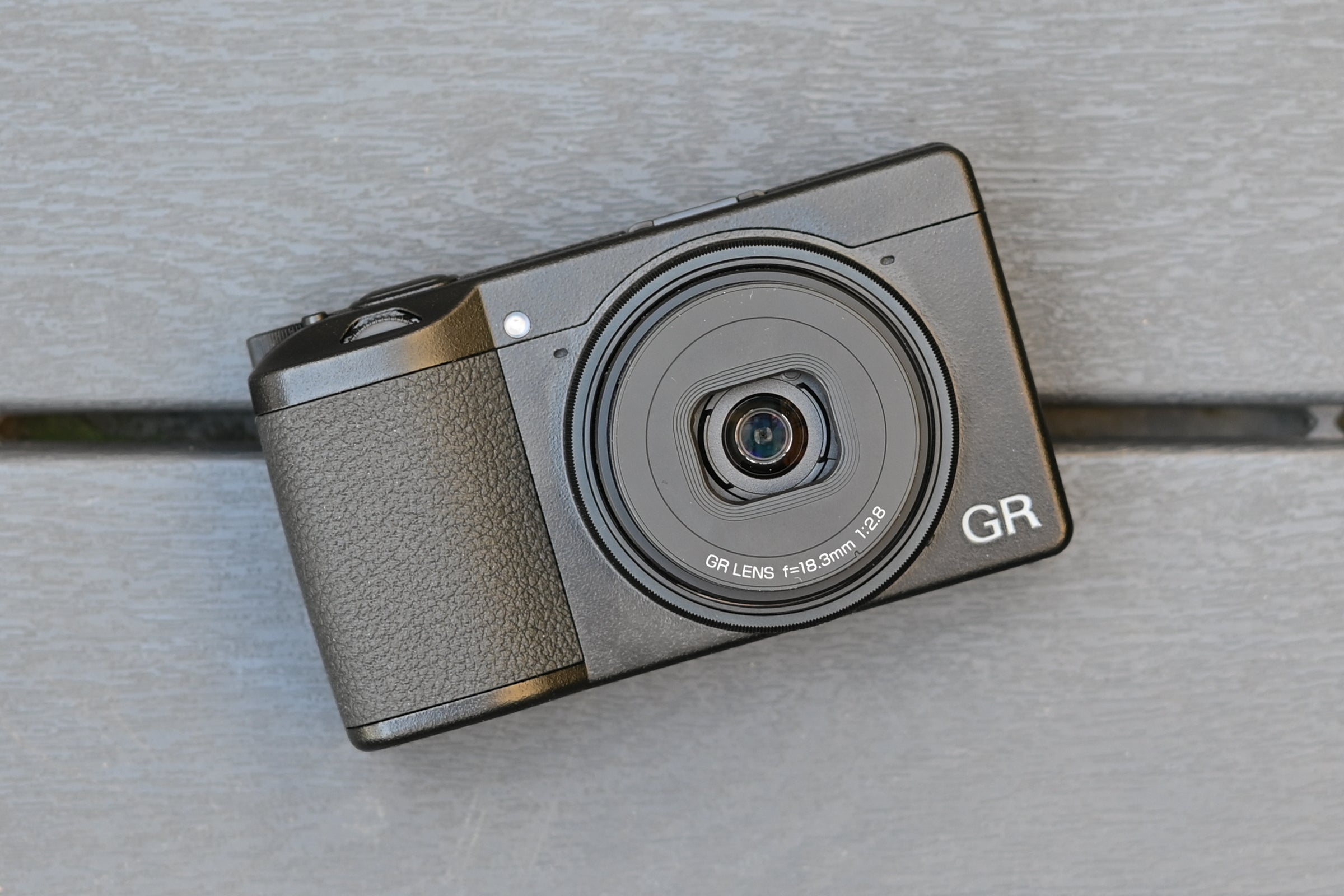
10. Ricoh GR III
A big sensor in a pocketable body make this a fine street-photography camera
Pros:
- Large sensor in a pocketable camera
- Great image detail and noise control
- Stabilisation works well
- Sharp and responsive touchscreen
Cons:
- Poor video quality with no 4K
- Rear screen is fixed
- Quite pricey
Ricoh’s GR series has long been a favourite among street photographers and the GR III plays to its traditional strengths, with a big APS-C sensor, three-axis image stabilisation and a new f/2.8 lens.
In good light, it performs very well, with fast performance thanks to its hybrid AF system and the ability to shoot detailed, noise-free shots even at ISO 6400.
The GR III’s design means it’s genuinely pocketable too, although the price of this is the lack of a viewfinder or tilting screen. If you need these, check out the Sony RX100 VI (1in sensor) or Canon G1X Mark III (larger APS-C sensor).
Still, the rear display is now a touchscreen, which is very responsive, sharp and contrasty, making it easy to frame shots in most lighting conditions. The shake-reduction system also works well to keep photos crisp, and lets you use slower shutter speeds with lower ISO settings to preserve image quality.
As long as you’re aware of the GR III’s limitations (poor video quality, fixed LCD screen, limited battery life) and are mainly looking for a street-photography camera rather than an all-purpose holiday compact, then it’s a great option that you’ll grow to love the more you use it.
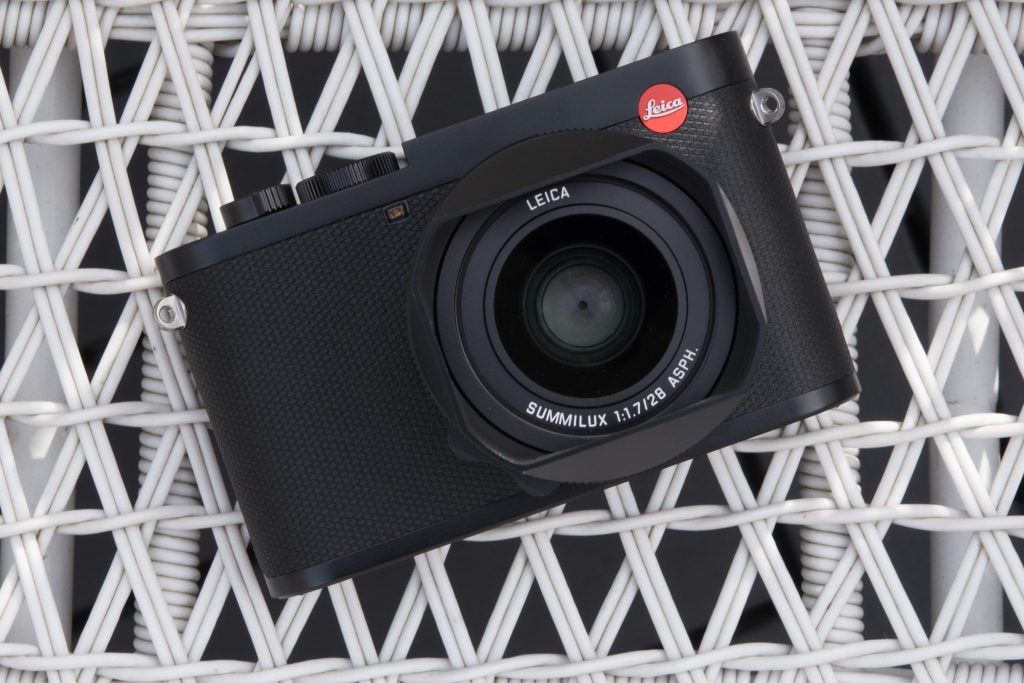
11. Leica Q2
If you can afford this stunning camera, you’ll be very happy with the results
Pros:
- Superb design and build
- Detailed, sharp images across the aperture range
- Stunning electronic viewfinder
Cons:
- Limited video performance
- No integrated grip
- That price tag
The Leica Q2 is pretty much unique, both in terms of performance and price.
Aside from Sony’s older RX1R and RX1R II, it’s the only fixed lens compact camera that has a full-frame sensor. And, unlike its predecessor’s, that sensor now captures 47.3-megapixel shots, which gives it an extra 75mm crop option.
So what else is new on the Q2? There’s a new Maestro processor, which lets it shoot 4K video at 24fps or 30fps, and it now has dust and spray protection to help it survive trips in the great outdoors.
Otherwise, the Q2 is largely the same bulletproof compact we have always known and loved, with an identical f/1.7 Summilux 28mm lens to the Leica Q (Typ 116). This helps it shoot superb images, with punchy and accurate colours, and great sharpness across the frame.
The EVF is now OLED and has a slightly higher magnification than its predecessor – it’s a superb way to frame your shots and means the Q2 is very usable in challenging lighting conditions.
Although the Q2’s lens is fixed, it does offer crop options for getting closer to the action – as before, there are 35mm and 50mm focal length equivalents, and it adds a 75mm option, which gives you 7-megapixel images.
There’s also a 3-in touchscreen with a 1.04-million dot resolution – perhaps the only disappointment is that it’s fixed rather than articulating, but this helps to improve the overall build quality and it performs well when, for example, setting the focus point.
If you’re looking for a class-leading compact camera for shooting street photography and documentary snaps, then the Leica Q2 is a fine choice – as long as you can afford that car-sized price tag.
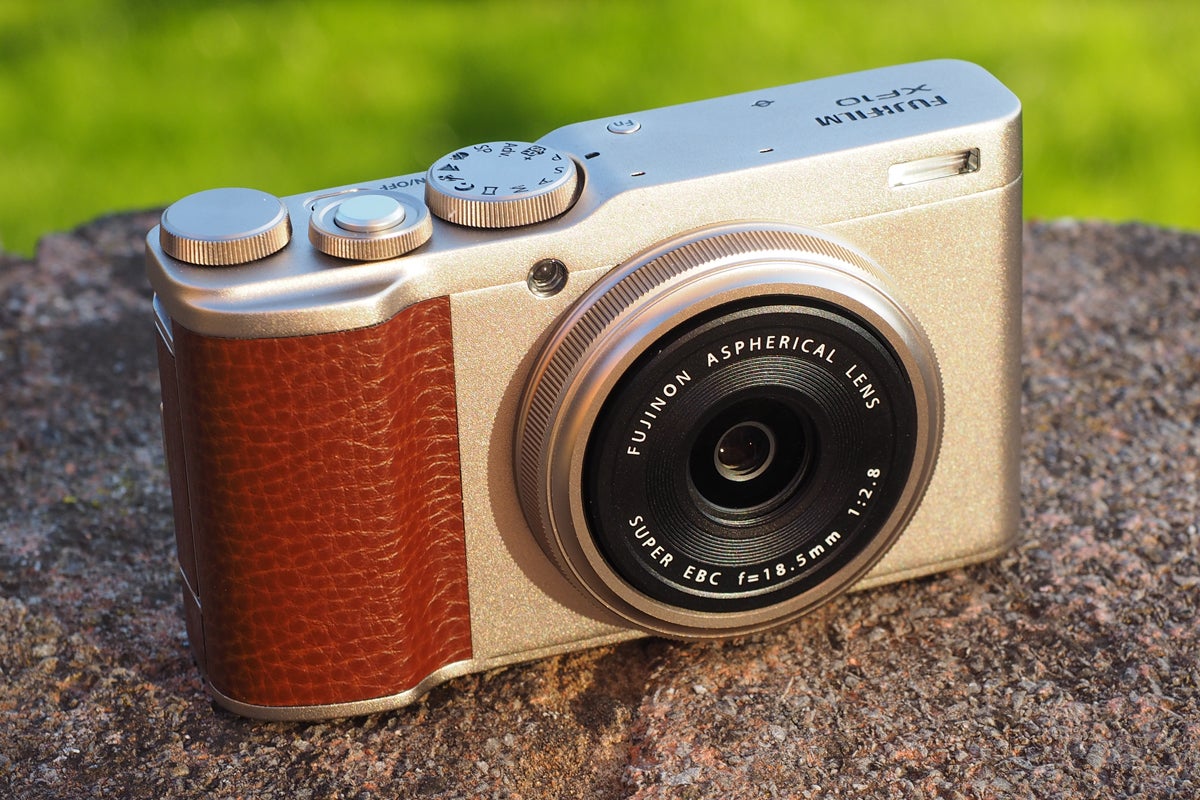
12. Fujifilm XF10
Very good value for a pocket camera with an APS-C sensor
Pros:
- Slim, pocketable design
- Sharp images with good colour
- Good value for a premium compact
Cons:
- Fixed rear screen
- No viewfinder
- No optical stabilisation
Like the Ricoh GR III, the Fujifilm XF10’s main appeal is that it packs a large APS-C sensor into a slim, pocketable design. Both cameras lack a viewfinder and tilting screen in order to achieve their slender dimensions, but the XF10 is much more affordable than its main rival, at just over half the price.
So does it offer better value than the GR III? Aside from autofocus performance that is good rather than great, and lack of optical stabilisation, it’s a good performer and well worth considering if you’re looking for a street-photography or city-break camera.
The XF10’s main strength is its excellent image quality, with distortion-free, edge-to-edge sharpness and the option of using Fujifilm’s useful Film Simulation modes. Its high-ISO performance is good too, and you get lots of control over dynamic range in the menus, making it easy to control scenes that contain a wide range of lighting.
Like the Ricoh GR III, video performance is disappointing by comparison (it does shoot 4K, but only at 15fps), so it’s very much a camera for stills shooters. If that’s you, and you like the sound of a pocketable big sensor compact for under £500, it’s one of the best around.
Incoming…
Zeiss ZX1
This full-frame compact camera, announced at Photokina, has lots of little tricks up its sleeve. Not only does the Zeiss ZX1 have a huge 4.3-in touchscreen, 512GB of internal memory, and a Zeiss Distagon 35mm f/2 lens (making it very similar to the one found on the Sony RX1 series), it’s also got Lightroom baked in, so you can edit your shots on the fly.
These are our top picks of the best compact cameras. If you want to know more about what to look out for when buying a compact camera, then read on.
Best compact camera buying guide – the different types available
Ruggedised compacts are essentially armour-plated compacts designed to be used underwater or on a sandy beach – or, indeed, anywhere that would be out of bounds for regular cameras or smartphones. As well as being water-resistant, most will survive a drop onto a solid floor from arm’s length without sustaining any damage.
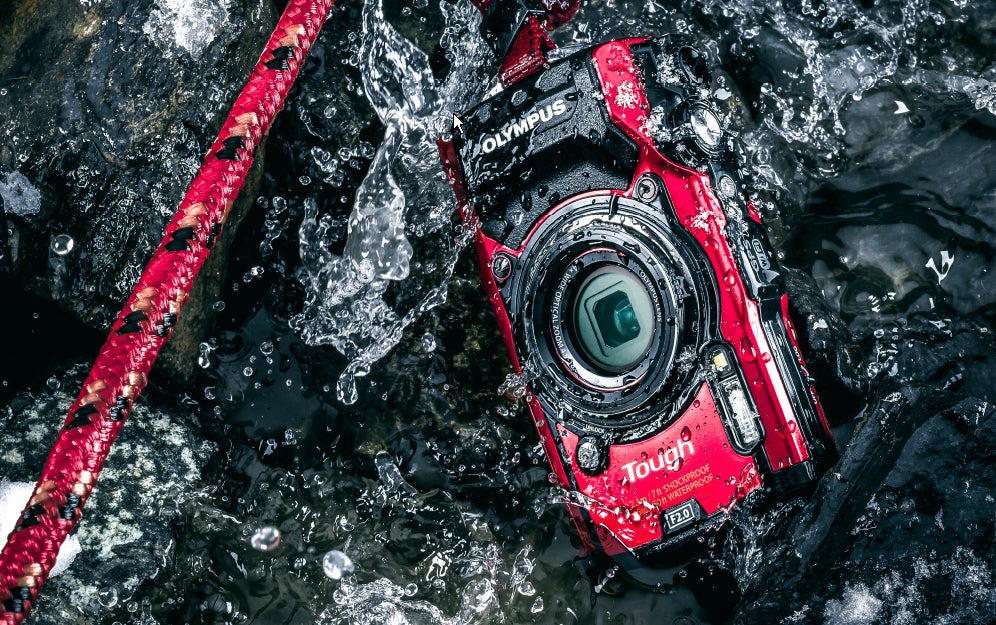
Strictly speaking, bridge compacts aren’t really compact at all, which is why we haven’t included them here; they’re often about the same size as a mid-level DSLR. Still, their big selling point is that they come with a large fixed zoom that provides anywhere from 24-200mm to 24-600mm and beyond. They’re versatile and flexible, as long as you don’t mind a camera with a bit of bulk, that isn’t designed to fit your pocket.
Travel compacts are much like bridge compacts, only smaller. They’re equipped with smaller optical zooms than bridge cameras, although most still come in around 24-200mm or thereabouts. Since they’re usually small enough to slip into a coat pocket, they’re ideal for taking on holiday.
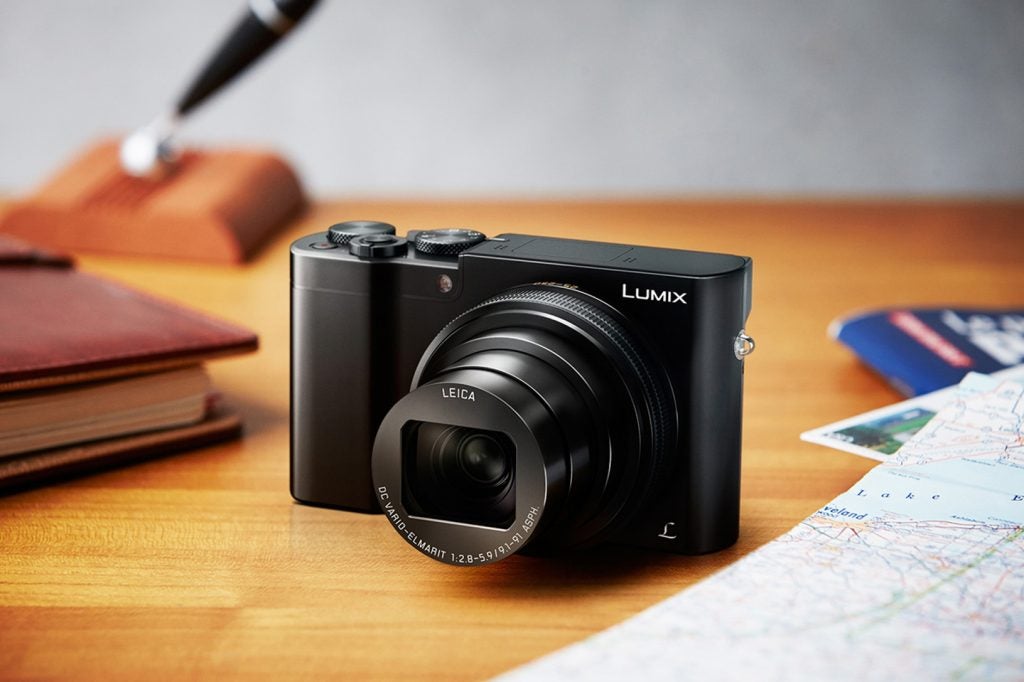
Premium compacts are perhaps the most exciting sub-genre of the compact market right now, since this is where manufacturers tend to showcase their most technologically advanced and refined models. These almost always come with a 1-in sensor, although some even use APS-C and even full-frame sensors.
Compact camera jargon explained
1-in sensor: One of the chief ways that manufacturers have improved their compacts is by increasing the size of the sensor. Whereas small 1/2.3-in sensors are still used in many cheaper compacts (and, indeed, some smartphones), more advanced models often come with a 1-in sensor that features around four times the surface area. You can expect a 1-in sensor compact to offer better low-light performance and a higher dynamic range.
Wi-Fi: All of the cameras in this round-up offer built-in Wi-Fi as standard. This means you can connect them to your smartphone, transfer images from camera to phone, and then use your phone’s mobile data functionality to upload your images to social media or email them soon after they’ve been taken. Some apps will even allow you to control the camera remotely.
Image stabilisation: If you’re shooting at slower shutter speeds or extended telephoto lengths, then the natural shake in your hands can result in blurred images. This is where image stabilisation (IS) comes to the rescue. Each manufacturer has its own name for the technology, but in essence there are two types: sensor-shift IS, where the camera’s sensor moves to correct hand shake, and lens-based IS, where the lens makes minute adjustments to compensate instead. Either way, with IS engaged you should be able to achieve pin-sharp shots at much slower shutter speeds than would otherwise be possible.
4K video: While virtually all modern compacts can record at least 720p HD and usually 1080p Full HD, 4K video isn’t quite so universal yet, and not all of the cameras in this round-up provide it. Of course, you’ll only get the full benefit of 4K video footage if you have a 4K monitor or TV to view it on.
Aperture: Aperture refers to the size of the hole that allows light to pass through to the sensor. This hole is created by a set of interlocked blades at the base of a lens that contract and expand as you change aperture settings. It’s measured in f-stops – the higher the f-stop, the smaller the hole; the lower the f-stop, the wider it is. Lenses with especially low apertures – typically f/1.4 to f/2.8 – are much sought-after by enthusiasts for two reasons. First, they let in more light, allowing you to use faster shutter speeds in low light. Second, they increase the depth of field effect, blurring the background behind an in-focus subject to make it stand out more.
Raw: Some of the cameras in this round-up let you record still images as lossless Raw files. These are different from JPEGs. When you capture a JPEG image, the camera will process the image for you before discarding some of the data to make the resulting image file smaller. But when recording images as Raw files, the camera doesn’t process the image internally, and retains all of the data captured by the sensor. This gives you much more scope to process the image yourself using specialist applications such as Adobe Lightroom or Photoshop.


